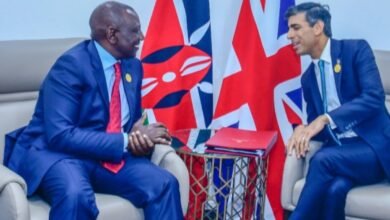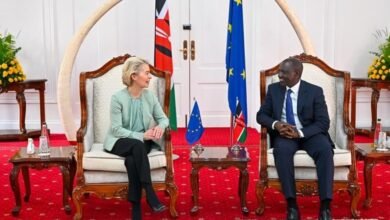
Kenya has launched the first ever National Wildlife Census, conducted on land and sea wildlife to establish the status of the country’s wildlife resources.
The objective of the exercise is to ascertain Kenya’s wildlife population and distribution, determine the exact locations of wildlife to minimize human wildlife conflict and identify threats to wildlife conservation and management.
According to the Ministry of Tourism and Wildlife, the census is part of efforts made towards the preservation and protection of wildlife in Kenya.
The exercise will see all the wildlife animals counted including terrestrial, fresh water, marine mammals, key birds (ostrich and kori bastards), endangered primates (Tana Mangabey and Tana red colobus) and reptiles (crocodiles).
“We will undertake aerial total census in wildlife ecosystems; Tsavo, Maasai Mara, Amboseli, Laikipia-Samburu, Meru, Garissa, Wajir, Marsabit, Turkana, Marine animals, and fresh water birds within the Coast & Major Rivers – funded by the Kenyan Government.” Said Tourism and Wildlife Cabinet Secretary, Najib Balala during the launch at the Shimba Hills National Reserve.
The census will help change the conservation model that mitigates human wildlife conflict, while protecting people’s livelihoods.
According to KWS Director General, Brigadier John Waweru, the census will enhance conservation efforts by determining the exact numbers of all wildlife including the endangered species and their exact location.
“The National Wildlife Census is meant to help ascertain Kenya’s wildlife population and distribution,” said Brigadier Waweru.
Principal Secretary in the State Department of Wildlife, Safina Kwekwe noted, “The tourism industry will be the largest beneficiary of the Census because we will be able to know what we have and hence enhance the product experience of our visitors.”
To collect the wildlife data, officials said different scientific methods will be used that will be largely dependent on the species and the habitat types.
Aerial survey technique will be used to count large mammals in the savannah/arid and semi-arid conservation areas while camera traps and dung count methods will be used in forested ecosystems.
For the wetland ecosystems, both aerial and ground count methods will be applied. The proposal also intends to invest in capital equipment which include procurement of satellite collars and micro-chips, GPS, camera traps among others.
Last year, Kenya recorded zero rhino poaching, with officials saying that this count will support the ongoing multi-sectoral conservation efforts by establishing the exact numbers and distribution.





